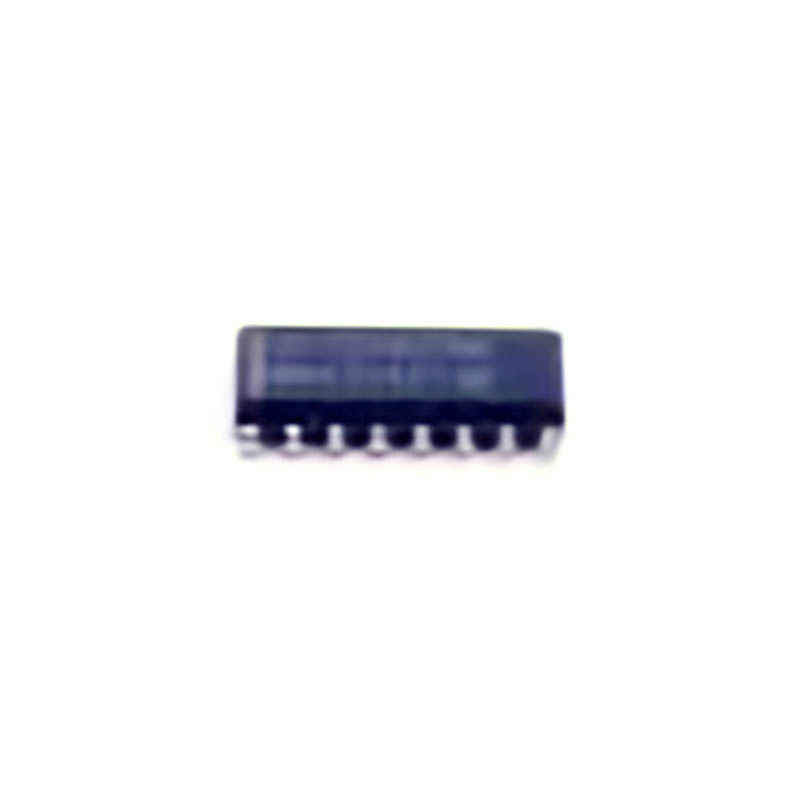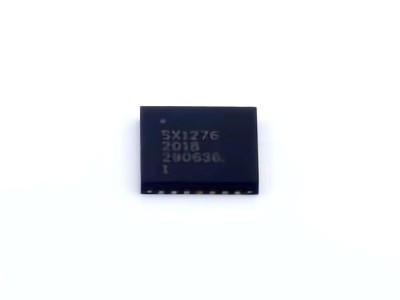
Understanding the MAX3232IDR and Common Issues
The MAX3232IDR is a widely used RS-232 transceiver designed to convert voltage levels between TTL (Transistor-Transistor Logic) and RS-232 standards. RS-232 is a standard for serial Communication that allows data transfer between devices such as microcontrollers, PCs, and other peripherals. The MAX3232IDR is part of the MAX3232 series, known for its low Power consumption, wide operating voltage range, and small footprint.
Despite its reliability, users often encounter issues during installation and operation. Troubleshooting these issues effectively requires an understanding of the transceiver’s core functionalities, as well as the environment in which it is being used. Below, we discuss the most common issues that users may face with the MAX3232IDR and offer practical solutions to resolve them.
1. No Communication or Data Transmission Failure
One of the most frequent issues is the failure of data transmission or communication between devices connected via the MAX3232IDR. This can manifest in various forms, such as no data being received, garbled data, or no response from the connected device.
Common Causes:
Incorrect wiring: Ensure that the MAX3232IDR’s TX, RX, and ground pins are correctly connected to the corresponding pins on the devices it is interfacing with. Pay special attention to pinouts, as they can vary between different module s and microcontrollers.
Faulty capacitor connections: The MAX3232IDR requires external capacitors for proper functioning. If the capacitors are incorrectly sized, missing, or improperly connected, communication will fail.
Incorrect voltage levels: The MAX3232IDR operates between a supply voltage of 3V and 5.5V. Ensure that the voltage supplied to the IC is within this range. Lower or higher voltages could result in improper communication or failure.
Solution:
Double-check the connections according to the datasheet.
Confirm that all capacitors are correctly placed and sized (typically 0.1 µF).
Ensure that the supply voltage is within the specified range of 3V to 5.5V. If necessary, use a voltage regulator to maintain a stable supply voltage.
2. Poor Signal Integrity or Signal Loss
Signal integrity issues are common in communication circuits, and the MAX3232IDR is no exception. Users may experience data corruption or loss if the signal quality is poor, resulting in unreadable or delayed data.
Common Causes:
Long cable lengths: If the cables connecting the MAX3232IDR to other devices are too long, the RS-232 signals may degrade, leading to communication issues.
Interference or noise: Electromagnetic interference ( EMI ) from nearby equipment, motors, or high-frequency devices can corrupt the RS-232 signal.
Incorrect voltage levels: If the voltage levels are too high or too low, signal degradation can occur, which affects the quality of the transmitted data.
Solution:
Keep the wiring between the MAX3232IDR and other devices as short as possible to minimize signal degradation.
Use shielded cables to reduce the risk of EMI. Additionally, ensure proper grounding of the circuit to minimize noise.
Verify that the voltage levels are within the required specifications to ensure proper data transmission.
3. Power Supply Problems
The MAX3232IDR requires a stable and clean power supply to operate correctly. Issues related to the power supply, such as voltage fluctuations, noise, or incorrect levels, are common causes of device malfunction.
Common Causes:
Unstable or noisy power source: Fluctuations or noise on the power supply line can disrupt the operation of the MAX3232IDR and cause communication failures.
Undervoltage or overvoltage: Providing an incorrect supply voltage, either too high or too low, can cause the MAX3232IDR to malfunction.
Solution:
Use a regulated power supply to provide a stable voltage to the MAX3232IDR.
Add capacitors (such as 100nF or 1µF) close to the power pins to filter noise and smooth out any voltage fluctuations.
Check the input voltage with a multimeter to ensure it is within the specified range of 3V to 5.5V.
Advanced Troubleshooting and Additional Solutions
Once basic issues such as wiring errors or voltage problems are ruled out, users may encounter more complex issues that require further troubleshooting. These problems might not be as obvious but can have a significant impact on performance. In this section, we will cover some advanced troubleshooting techniques and additional solutions for dealing with less common but more persistent problems.
4. Incorrect Data Format or Baud Rate Mismatch
Another common issue when using the MAX3232IDR is data format mismatches, especially when the baud rate, data bits, stop bits, or parity are incorrectly set. This can result in corrupted or unintelligible data, even though the devices are physically connected correctly.
Common Causes:
Mismatched baud rate: If the baud rate set in the transmitting device does not match the rate expected by the receiving device, communication will fail.
Data format mismatch: The data bits, stop bits, or parity settings might not align between the transmitting and receiving devices.
Solution:
Ensure that the baud rate, data bits, stop bits, and parity settings match on both the transmitting and receiving devices. This can usually be configured in the software or firmware of the devices.
Test the connection by sending known test patterns (e.g., ASCII values) and verify the received data.
5. Thermal Issues or Overheating
Electronics can sometimes experience overheating issues that lead to malfunction. While the MAX3232IDR is designed to operate within a wide range of temperatures, it can still suffer from thermal issues if the power supply is not well regulated or the device is used in a high-ambient-temperature environment.
Common Causes:
Insufficient heat dissipation: If the MAX3232IDR is embedded in a system that does not provide adequate airflow, it may overheat and cause erratic behavior.
Power supply inefficiency: An inefficient power supply can cause excessive heat buildup.
Solution:
Ensure that the MAX3232IDR is properly cooled, especially if it’s embedded in a dense electronic system.
Consider adding heat sinks or improving airflow around the IC if it’s used in a high-temperature environment.
Monitor the temperature of the system with a thermal sensor to ensure that the MAX3232IDR is not overheating.
6. Failure to Start or Reset Issues
In some cases, users may find that the MAX3232IDR fails to initialize or reset correctly after power-up. This could be due to an improper startup sequence or issues with the reset circuitry.
Common Causes:
Improper power-up sequence: If the power-up sequence is not followed correctly, the MAX3232IDR may fail to initialize properly.
Reset pin not triggered: The reset pin of the MAX3232IDR needs to be held low for a brief period during startup to ensure proper initialization.
Solution:
Ensure that the power supply is applied gradually to avoid spikes that could prevent the MAX3232IDR from initializing properly.
Check the reset circuit and ensure that the reset pin is being pulled low for a sufficient time during startup.
7. Intermittent Operation or Stability Issues
Some users report that their MAX3232IDR transceiver works intermittently, or fails after some time. This is often related to power supply issues, insufficient grounding, or problems with the PCB layout.
Common Causes:
Power supply instability: Fluctuations or noise on the power supply can cause the MAX3232IDR to behave erratically.
Poor PCB layout: If the layout of the PCB is not optimized, signals can become corrupted due to long traces or poor grounding.
Solution:
Double-check the PCB layout and ensure that all traces are short and thick, especially those related to power and signal lines.
Add additional decoupling capacitors to stabilize the power supply, and ensure that the ground plane is continuous and free of noise.
Conclusion
The MAX3232IDR is a robust and reliable RS-232 transceiver, but like any piece of electronic equipment, it can encounter issues during use. By following the troubleshooting steps outlined in this guide, you can effectively identify and resolve common problems related to communication failure, signal integrity, power supply issues, and more. Whether you are a beginner or an experienced engineer, understanding these troubleshooting techniques will help ensure smooth operation and longevity for your MAX3232IDR-based systems.
If you are looking for more information on commonly used Electronic Components Models or about Electronic Components Product Catalog datasheets, compile all purchasing and CAD information into one place.

